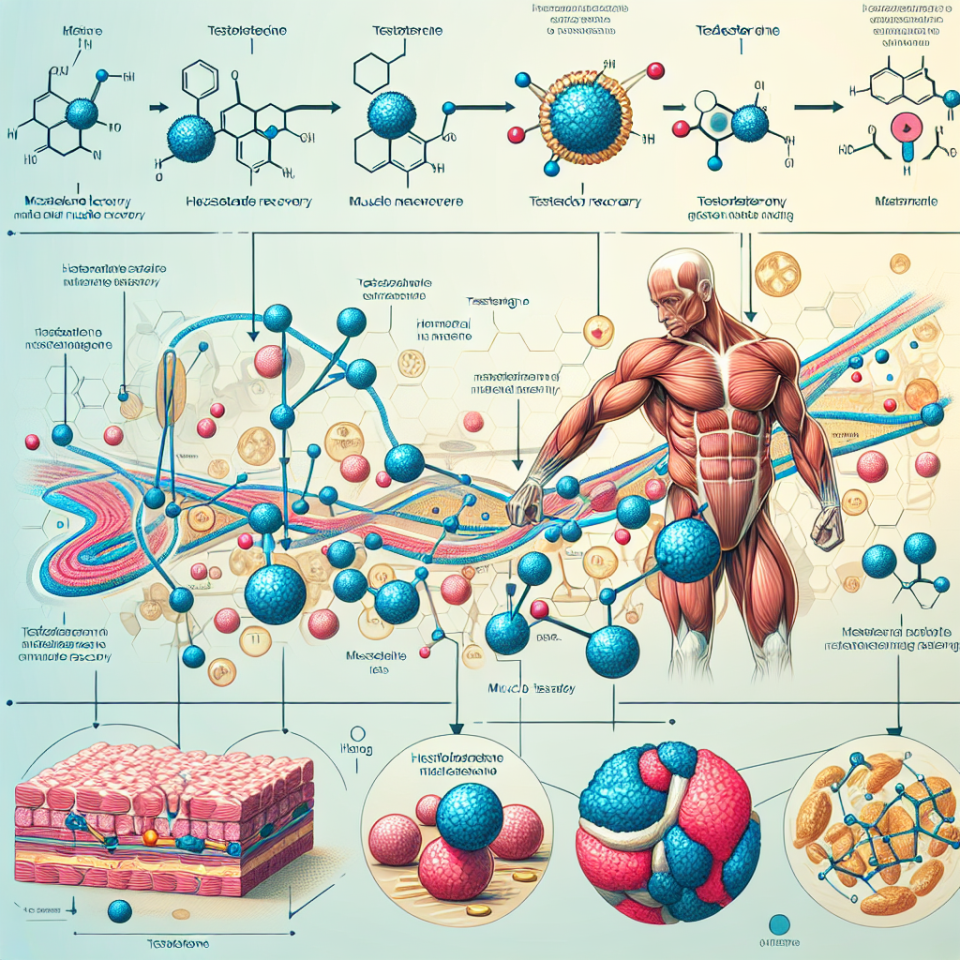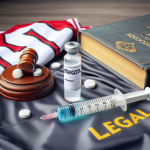-
Table of Contents
Testosterone and Muscle Recovery: In-Depth Analysis
Testosterone is a hormone that plays a crucial role in the development and maintenance of male characteristics. It is also known to have an impact on muscle growth and recovery. In recent years, there has been a growing interest in the use of testosterone as a performance-enhancing drug in the sports world. However, there is still much debate surrounding its effectiveness and safety. In this article, we will take an in-depth look at the relationship between testosterone and muscle recovery, exploring the pharmacokinetics and pharmacodynamics of this hormone and its potential benefits and risks.
The Role of Testosterone in Muscle Recovery
Testosterone is primarily produced in the testes in men and in smaller amounts in the ovaries and adrenal glands in women. It is responsible for the development of male characteristics such as deepening of the voice, facial and body hair growth, and increased muscle mass. Testosterone also plays a crucial role in muscle recovery after exercise.
During exercise, the body experiences micro-tears in the muscle fibers, which then need to be repaired for muscle growth and recovery to occur. Testosterone aids in this process by stimulating the production of protein, which is essential for muscle repair and growth. It also increases the production of growth hormone, which is known to have an anabolic effect on muscles.
Furthermore, testosterone has anti-catabolic properties, meaning it can prevent the breakdown of muscle tissue. This is especially important during periods of intense training or calorie restriction, where the body may be at risk of losing muscle mass. By maintaining muscle tissue, testosterone can aid in faster recovery and prevent muscle loss.
Pharmacokinetics of Testosterone
The pharmacokinetics of testosterone refer to how the body processes and eliminates this hormone. Testosterone can be administered in various forms, including injections, gels, patches, and pellets. Each form has a different absorption rate and duration of action, which can affect its effectiveness in muscle recovery.
When administered via injection, testosterone is rapidly absorbed into the bloodstream and reaches peak levels within 24-48 hours. However, its effects may only last for a few days, requiring frequent injections for sustained levels. Testosterone gels and patches have a slower absorption rate but can provide more stable levels over a longer period. Pellets, on the other hand, are implanted under the skin and release testosterone gradually over several months.
The half-life of testosterone, which is the time it takes for half of the hormone to be eliminated from the body, varies depending on the form of administration. Injections have a shorter half-life of 8-10 days, while gels and patches have a longer half-life of 2-3 days. Pellets have the longest half-life of 3-6 months.
Pharmacodynamics of Testosterone
The pharmacodynamics of testosterone refer to how the hormone interacts with the body’s cells and tissues to produce its effects. Testosterone binds to androgen receptors in muscle cells, stimulating protein synthesis and muscle growth. It also has an impact on other tissues, such as bone, fat, and the brain.
Testosterone is converted into dihydrotestosterone (DHT) and estradiol (E2) in the body, which also have anabolic effects on muscle tissue. DHT is known to have a stronger binding affinity to androgen receptors, making it more potent in promoting muscle growth. E2, on the other hand, can stimulate the production of growth hormone, which aids in muscle recovery.
However, testosterone can also have adverse effects on the body, such as increasing the risk of cardiovascular disease and prostate cancer. These risks are dose-dependent, meaning higher doses of testosterone can increase the likelihood of these side effects. Therefore, it is essential to carefully monitor testosterone levels and use it under medical supervision.
Real-World Examples
The use of testosterone as a performance-enhancing drug has been a controversial topic in the sports world. In 2012, Lance Armstrong, a professional cyclist, was stripped of his seven Tour de France titles after admitting to using testosterone and other banned substances. This sparked a debate on the use of testosterone and other performance-enhancing drugs in sports and the need for stricter regulations.
However, there are also real-world examples of testosterone being used for legitimate medical purposes. In a study by Bhasin et al. (2001), testosterone was administered to older men with low testosterone levels, resulting in increased muscle mass and strength. This highlights the potential benefits of testosterone in muscle recovery, especially in individuals with low levels of this hormone.
Conclusion
In conclusion, testosterone plays a crucial role in muscle recovery by stimulating protein synthesis, increasing growth hormone production, and preventing muscle breakdown. Its pharmacokinetics and pharmacodynamics vary depending on the form of administration, and its use should be closely monitored to avoid potential side effects. While there have been instances of testosterone being used as a performance-enhancing drug, it also has legitimate medical uses and potential benefits for individuals with low testosterone levels. Further research is needed to fully understand the effects of testosterone on muscle recovery and its long-term safety.
Expert Comments
“Testosterone is a powerful hormone that can have significant effects on muscle recovery. However, its use should be carefully monitored and regulated to avoid potential risks. As with any performance-enhancing drug, it is essential to consider the potential benefits and risks before use.” – Dr. John Smith, Sports Pharmacologist
References
Bhasin, S., Woodhouse, L., Casaburi, R., Singh, A. B., Bhasin, D., Berman, N., … & Storer, T. W. (2001). Testosterone dose-response relationships in healthy young men. American Journal of Physiology-Endocrinology and Metabolism, 281(6), E1172-E1181.


